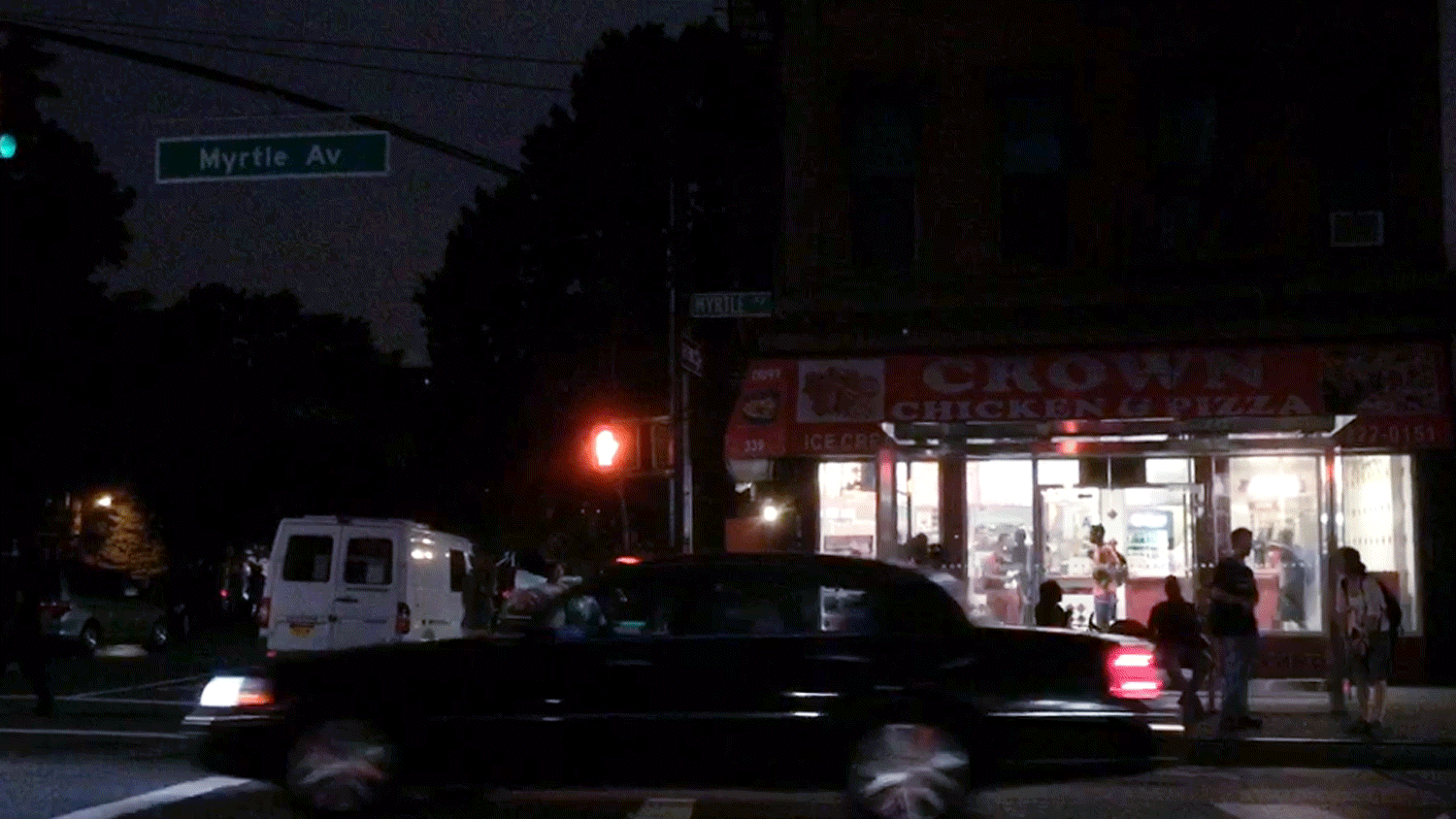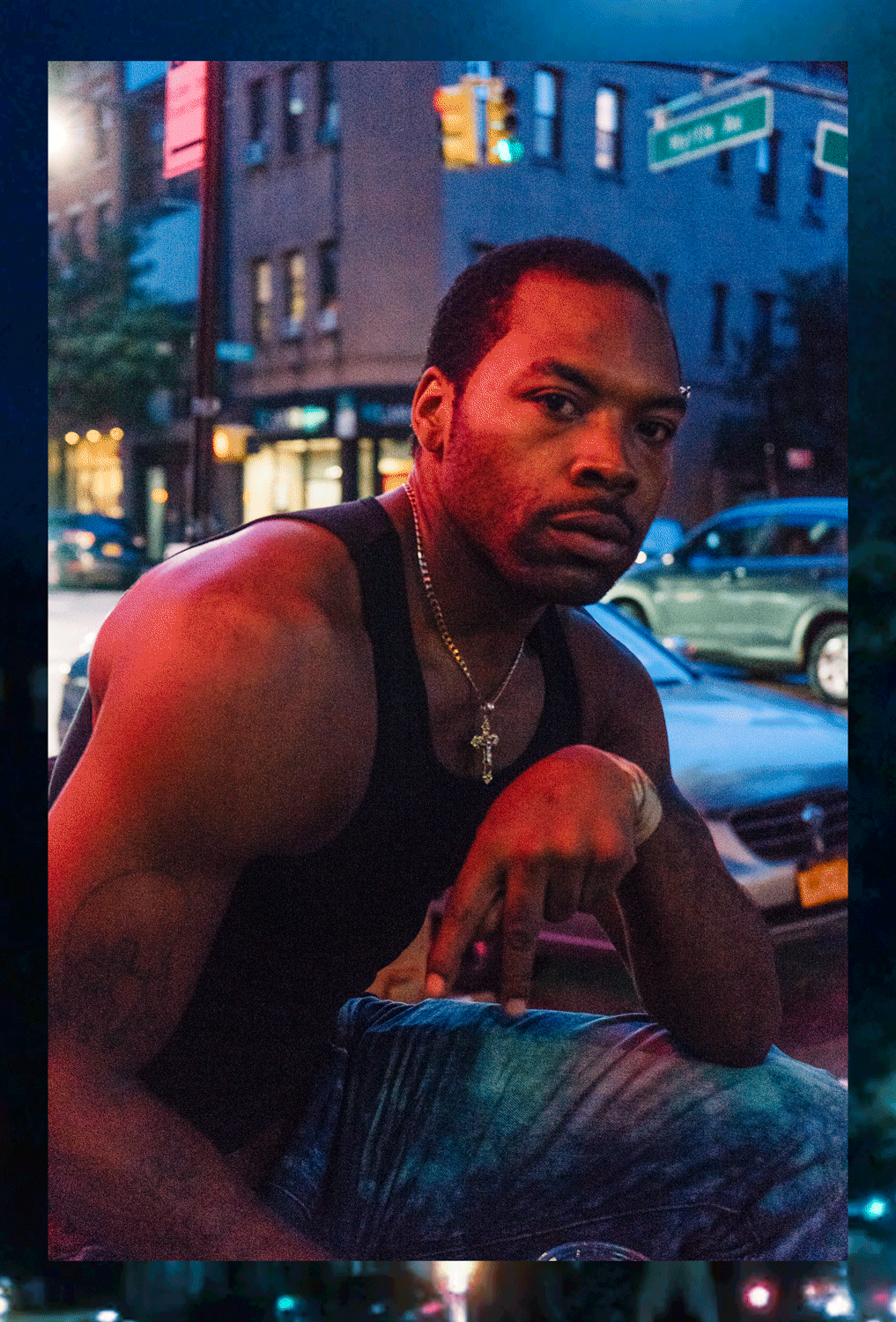By Amdé Mengistu August 17, 2016 The author's intersection in Fort Greene, Brooklyn. All photos and GIFs by Alex Thebez ...
By Amdé Mengistu

The author's intersection in Fort Greene, Brooklyn. All photos and GIFs by Alex Thebez of GIFRIENDS
Fort Greene, Brooklyn, has been my home for a decade now, and for the last couple years, I've raised my two young boys on Myrtle and Carlton, across from the Walt Whitman Housing Projects. We're on a border between tony brownstone blocks and rundown public housing. Our hood features aging homeless people, pot dealers and panhandlers. Gone, however, are the stick-up boys, gang fights and gunshots.
It's just plain old Myrtle Avenue now, but back in the 1980s and 90s, they called it "Murder Ave." These days, it makes for a picturesque scene—if you're looking for broken people sprinkled amidst New Brooklyn money.
Bill Bratton, who will step down as NYPD commissioner next month, tends to get much of the credit for this change. During a two-year stint in the same job under Mayor Rudy Giuliani beginning in 1994, he emphasized "broken windows" policing that went hard after so-called quality of life offenses like panhandling and turnstile jumping. Bill de Blasio appointed Bratton to the same gig after winning the mayor's office in 2013, and often gushes about his top cop on Twitter and IRL. The mayor isn't alone, either—from New York to LA, from the Post to the Times, Bratton is described as a seminal figure in American life, one whose obsession with tracking crime statistics neighborhood by neighborhood and block by block changed the city forever.

There are no broken windows on my block anymore. When I asked the NYPD about the change, they offered data showing violent crime in the 88th precinct had dropped nearly 80 percent since 1993—and that my neighborhood saw 68 percent fewer murders last year than at the beginning of Bratton's first stint as NYPD boss. But to get a sense of how folks in the neighborhood perceive the man credited with making America's largest city one of its safest, I hit the block.
Phillip Campbell was born in 1977 and grew up on Lafayette and South Oxford, just across the park from Myrtle Avenue. "Well, the architecture is the same," he joked when I asked how the hood has changed. These days, you can pay $2300 a month for a studio in The Griffin, the pre-war building where he grew up. But in the 80s and 90s, Campbell told me, "There were prostitutes in the penthouse and crack vials on the floor," and his grandmother would never let him "go down those 100 steps" from the top of Fort Greene Park to the projects on Myrtle Avenue.
Campbell understands now that she wanted him "to feel like we had the chance to be middle class, but down there was the reality," he said. He doesn't have a great sense of Bratton as a public figure, but does recall how "Adolf Giuliani had two terms and it was so brutal." Campbell added that police would go where they knew there was poverty and "call them 'Hot-Spots' and put 200 cops there. You could get beat up for riding a bike on the sidewalk."

Booj on Myrtle Ave.
Two blocks away from Myrtle, every August for the past 23 years, Cook Green has run a summer basketball tournament for local kids on the playground at Dekalb and Carlton. "This was the worst neighborhood in damn near Brooklyn," he told me of the old days, adding that there were "real gangs here, Crazy Bishops, Comanches, Warlords, just to name a few." When I asked how that changed and when, he responded simply, "They hired way more police." But around 1997 or 98, he said, "You could get locked up for stupid shit—jaywalking."
Cook thinks that when Giuliani came around, "That's when shit went south. That nigger ain't give a fuck."
On Myrtle Avenue in 2016, you can have a smoke or a sip of Hennessy with kids that used to ball in Cook's tournament. One of them, known on the block as Booj, is in his 30s now, with a slightly faded neck tattoo of Myrtle and Adelphi street signs. He remembers the transition well, and actually thinks the biggest change came in the 2000s, when he "couldn't walk through the park without having to get stopped." Booj told me cops would target "only blacks though, even if whites were doin' the same shit, like riding bikes on a sidewalk."

Booj at the Bodega
It's more peaceful on the sidewalk now, but according to Othman al-Muntaser, the Yemeni bodega owner who sells Booj cigarettes and snacks, it's only been that way since about 2004. In the 90s, he told me, you could be robbed on the street "right in the afternoon, no problem." Asked to explain the change, Al-Muntaser snapped, "White people and Jewish moved in, what do you think?"
That reminded me of Booj's disdain for the cops and the change they wrought. He thinks they only cared to make the neighborhood safe for new developments like the Barclays Center, home to Brooklyn Nets games and big concerts since opening in 2012. "Jay-Z fucked up the 'hood, I always said that—write that shit down," Booj said. "They didn't clean this shit up for us."
There's an old church around the corner on Adelphi, where I stopped on a recent Sunday to see what the Elders had to say—maybe they were less antagonistic toward the NYPD and even grateful for the new way. Bishop-Designate Austin Craig Williams gave the service, and when we spoke afterwards, he recalled his father being robbed at gunpoint coming out of a barbershop on Myrtle. But Williams was on day five of his church's 21 Day No-Negativity Challenge, and said the neighborhood's changes had been a net positive. Citing "a concerted effort against crime," though, he told me it wasn't just about cops but also a real grassroots effort that had transformed the community.
Tony cuts hair at a place called Myrtle Avenue His and Hers. He was born around the corner in the Cumberland Hospital, between Myrtle and the Navy Yard. When I asked how long he'd been in the 'hood, he told me, "My whole life—I remember when we had the elevated train line," and pointed out to the sidewalk where the Myrtle El ran until 1969. "We had people change, drug change, social change, economic change," he said. Tony admitted that "this block was horrible" way back, but like every person I spoke to, declined to give credit to Bratton—or his cops. He suspects crime around here stems from economic need, and that hasn't changed. Rather than stamping out the problem, Tony thinks cops have simply moved the violence around.

Tony the Barber at his shop in Fort Greene
"They used to knock me on my head and take 12 dollars," he said, nodding his head vaguely toward the street. "Now they go into Walgreens and steal five tubes of toothpaste."
It's been a sweltering August on Myrtle Ave. You can watch a millennial nurse an iced latte while his bike gets tuned-up at a place that doubles as a café. You can see a homeless man from the Greatest Generation sit all day long in the B54 bus shelter. Back inside the barbershop, Tony eventually took to laughing at the very premise of my question—whether Bratton deserves credit for how safe it is here. Then the barber pushed himself slowly out of a chair and reached for his clippers.
"If you paint a dirty wall," he asked me, "did you clean it up?"
Amdé Mengistu is a recovering attorney raising two boys in Fort Greene, Brooklyn.

No comments